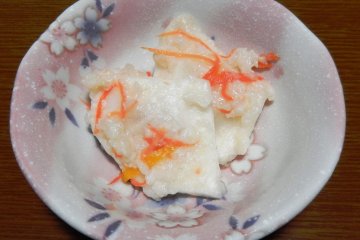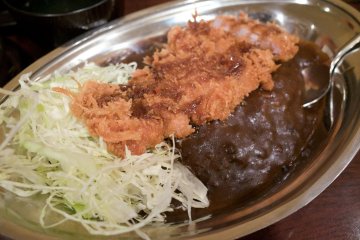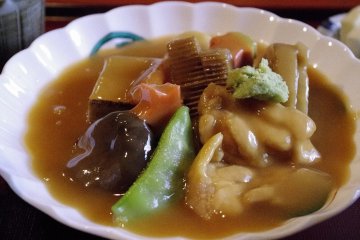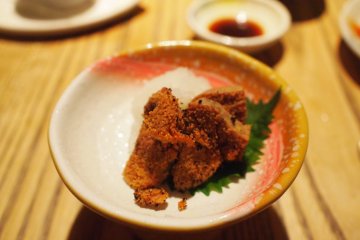Overview
Bordering the Japan Sea, Ishikawa is naturally famous for its quality seafood and the exoticism of its local foods. Yellowtail and the poisonous pufferfish, for example, are prepared using truly unique methods of fermentation. However, it may come as a surprise to many that non-seafood dishes are also very popular like the prefecture's unique take on curry and a winter hotpot dish that relies on fatty duck. Here is a simple guide to some of the regional cuisine of Ishikawa.
Kaburazushi
Ishikawa's kaburazushi is a proper speciality, unknown to most people. A unique dish, kaburazushi sees salted yellowtail fish - and sometimes mackerel - wedged between pieces of pickled turnips and then packed full of koji starter stock for several days leading to a unique umami-imbued flavour.

Kanazawa curry
If Japanese curry is a hit then Ishikawa's Kanazawa curry must be a smash. Famous for a thickly rich brown sauce with a sweet caramel flavour to it, Kanazawa curry is served with deep-fried pork cutlet and shredded cabbage. Completely covering the included rice, the sauce is so thick that many people feel they can eat it with a fork.

Jibuni nabe
A traditional Ishikawa dish, jibuni nabe is a hotpot of battered duck, steamed then added to a bonito or soy broth complete with regional vegetables. This savoury dish is one of real depth and is best served in the colder winter months when the Ishikawa's duck meat is fatty and full of flavour.

Fugu nukazuke
One of the nation's most curious dishes, Ishikawa's fugu nukazuke are the fermented ovaries of the poisonous fugu puffer. A licence is required to prepare this dish which sees the fugu ovaries pickled in salt and then rice malt. This process detoxifies the poison and takes around three years to work. The resulting flavour not only salty but very rich.












